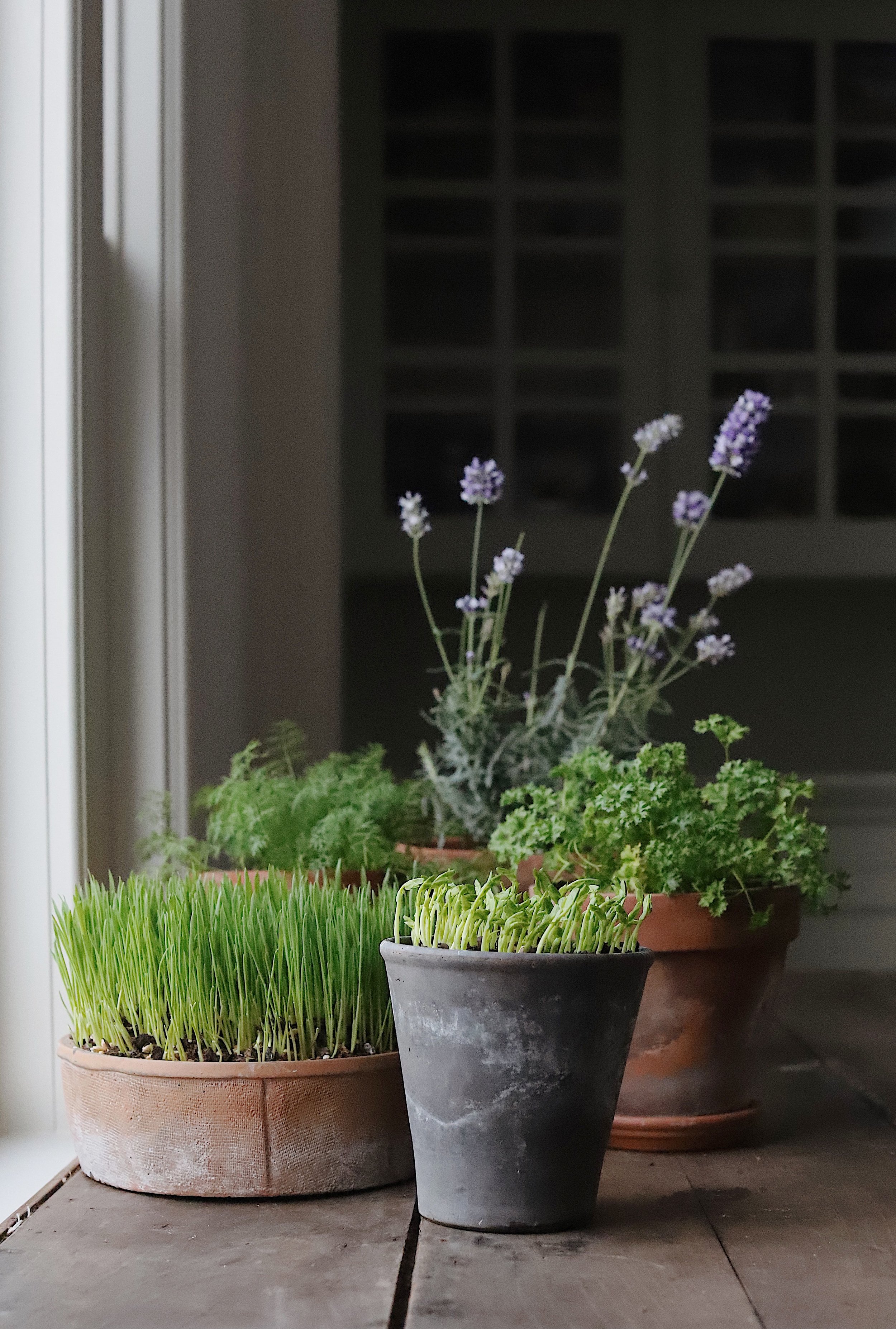Tips for Indoor Windowsill Gardening
Every once in a while I get questions from folks who would love to grow a garden but don’t have access to an outdoor space. While I’ve always had at least a patio to grow simple plants, like tomatoes and herbs, I can commiserate with the feeling that comes with not being able to grow something when you want. LIving in a climate with six months of winter is challenging such that, come February, I often question our move from California to the midwest. What’s helped me squeeze some joy into those last two months of winter is pouring over seed catalogs, planning a spring and summer garden, sprouting seeds, beans, and nuts, and growing an indoor windowsill garden using microgreens, wheatgrass, or herbs. For the latter, all you need is a well-lit windowsill, a few pots, rich potting soil, and a little know-how. Below are a few tips for setting up a successful indoor windowsill garden that will thrive in most environments and throughout the seasons.
Choose the right spot. Since most plants need at least 4-6 hours of direct sunlight a day, a south-facing window is an ideal place to set up an indoor garden. Be sure to choose a window that isn’t obstructed by a tree or building or any other object that might block the sun’s rays and create too much shade for your plants to grow. If you don’t have enough natural light, you can invest in a grow light designed specifically for indoor gardening. For best results, aim to keep temperatures between 70°-75° F and avoid windowsills near heating vents and cooking appliances, which can upset the natural humidity in the air.
Choose plants that thrive indoors. In terms of herbs, choosing plants is mostly a matter of space. If you’re short on it, try basil, chives, dill, mint, oregano, parsley, savory, and thyme. If you have ample space, you could also try rosemary, sage, and lavender. For veggies, choose quick-maturing plants that you can grow in succession, such as microgreens, loose leaf lettuce, or wheatgrass. You can start from seed or transplants, depending on time, space, and season (depending on where you live, transplants can be hard to come by in the winter!).
Use the right container. If starting with transplants, re-pot them in a container that is at least 6-12 inches deep. If planting herbs, you can plant several together in a wide or long container; for individual herbs, use a pot that is at least 6 inches wide. If starting with seeds, you can use a smaller pot and transplant them to a larger pot when they’re 2-4 inches tall. Be sure to use pots with drainage holes and place a saucer beneath them to catch excess water and protect your windowsill from damage.
Use soilless potting mix. Purchase and use a soilless potting mixture from the gardening store. Aside from being free of disease and other contaminants, soilless mixtures use peat moss and other ingredients to optimize drainage, water retention, and airspace. Regular soil, on the other hand, compresses over time, making it difficult for water to pass through.
Water and spray as needed. To test whether your plants need water, stick your finger in the top layer of soil. If it’s dry, give your plants some water; if it’s damp, let them be. After watering your plants, empty the saucers to eliminate excess water accumulation. Also, since the air can get dry indoors, particularly in heated homes in the winter, fill a spray bottle with water and lightly mist the leaves and top soil one to two times a week,
Fertilize and treat for pests. Feed your plants a natural liquid fertilizer every few weeks. If your plants look like they’re infested with aphids or other pests, spray them with diluted soapy water (1 tbsp of castile soap diluted in one quart of water).
Trim herbs regularly. Harvest veggies, as needed and snip herbs often. Trimming herbs regularly will encourage them to grow full and bushy. Never trim more than 1/3 of the foliage at a time, as more than that can cause stress.


